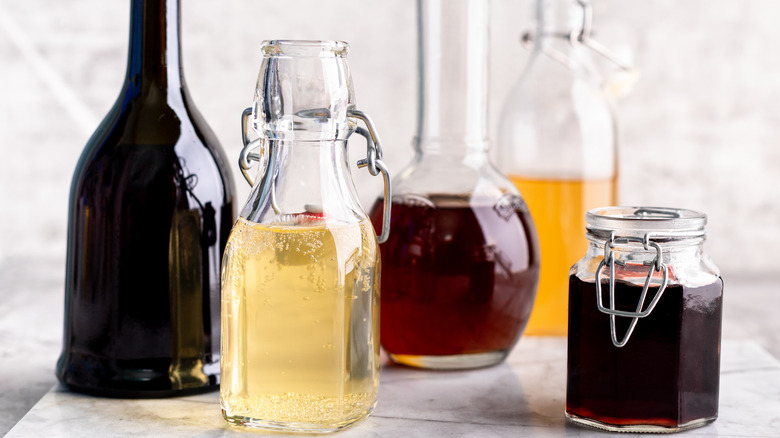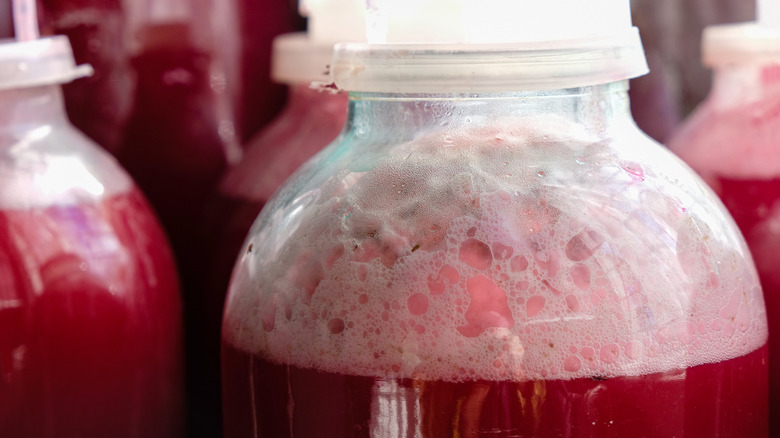You Can Make Red Wine Vinegar With Simple Ingredients You Already Have
Vinegar is a common pantry ingredient you might not think too much about. Easy to pick up at the store and not too expensive, it brings a bright pop of acid that's an essential addition to many recipes, so choosing a good one is key. Making your own red wine vinegar is one way to ensure you know exactly what's gone into it. You don't need fancy equipment or much hands-on time for this satisfying project, just a jar and some waiting time. And you only need red wine and one other ingredient to get started — a bit of unpasteurized vinegar.
Vinegar always starts with some type of alcoholic beverage. In fact, that's where its name comes from: vin means wine, and aigre means sour in French. That's why you'll find vinegar varieties such as red wine vinegar, champagne vinegar, and rice wine vinegar, named for the starting alcohol product. Apple cider vinegar begins its life as hard cider and common distilled white vinegar is made from flavorless grain alcohol. Naturally occurring acetic acid bacteria are added to the alcohol which transforms it into vinegar. If the resulting vinegar is not heated, or pasteurized, the bacteria remain in the bottle, ready to be used to start a new batch.
Getting started with your own vinegar
To get started, find a bottle of unpasteurized vinegar and a bottle of red wine. Look for vinegar at the store labeled unpasteurized or "contains the mother". Your wine should not be poor quality — after all, the flavors will be an important part of your finished vinegar; but there are a lot of great wines at lower price points.
Next, find a half-gallon jar and clean it well. Simply pour the wine into the jar, along with two cups of water and a half cup of vinegar. The water brings the alcohol percentage down to a bacteria-friendly level. Shake or whisk the liquid to give the bacteria enough air to get started, then loosely cover the jar with a paper towel and rubber band to prevent contamination while allowing air to enter. Keep the jar at room temperature and let the starter from the vinegar do its magic. In about eight weeks you can try it. If you like the taste, pour the vinegar into a pretty bottle (a funnel or jug with a narrow spout is useful here). If the vinegar is not sour enough, allow it to rest for another two weeks. You can add a sprig of rosemary, some black peppercorns, or a few crushed berries to your finished vinegar if you'd like. The vinegar jar will now have a solid piece of vinegar mother left behind — use that for your next batch by simply adding wine and water.

